Forget ‘Miracle Growth’—Here’s How Hair Oils *Actually* Work
After more than twenty years with my hands in hair, I can tell you I’ve seen it all. Countless products have crossed my station promising miracles in a bottle. When I was just starting out, the focus was all on cutting and styling. But then an older mentor—a woman who treated hair with this incredible, quiet respect—gave me the one piece of advice that changed everything. “You can’t build a strong house on a weak foundation,” she said. She was talking about the scalp.
In this article
That one idea sent me down a rabbit hole. I stopped just looking at the hair strand and started obsessing over the ecosystem that creates it. And that journey led me straight to the world of botanical oils, a practice that’s both ancient and totally backed by modern-day know-how.
So, let’s talk about the number one question I get: “Can oils make my hair grow faster?” It’s a great question, but it starts from a tiny misunderstanding. Oils don’t magically add inches overnight. Think of them more like top-tier fertilizer for a garden. They create the absolute best conditions for your hair to grow strong and healthy right from the root. They feed the scalp, protect the hair you already have, and help support a healthy growth cycle. But, and this is a big but, you have to use them correctly. Using the wrong oil or the wrong technique can honestly do more harm than good.

Let’s clear up the most important thing right now: the difference between a carrier oil and an essential oil. They are not the same thing, and knowing this is your first step to getting real results.
- Carrier Oils: These are the workhorses. Think of them as the base of your smoothie. They come from the fatty parts of a plant—the seeds, nuts, or kernels. We’re talking about oils like olive, coconut, and jojoba. They’re packed with good fats and vitamins and are gentle enough to be used directly on your skin and hair in generous amounts.
- Essential Oils: These are the potent boosters. They’re like the concentrated vitamin shot you add to your smoothie. They’re super-concentrated extracts from leaves, flowers, or bark, captured through distillation. Lavender, rosemary, and peppermint are common examples. They are so powerful that you absolutely MUST dilute them in a carrier oil. Putting them directly on your skin can cause some serious irritation or even burns.
Everything in this guide comes from years of mixing my own formulas, advising clients, and learning from both wins and, let’s be honest, a few mistakes. We’ll get into what really works, so you can build that strong foundation for the healthiest hair possible.
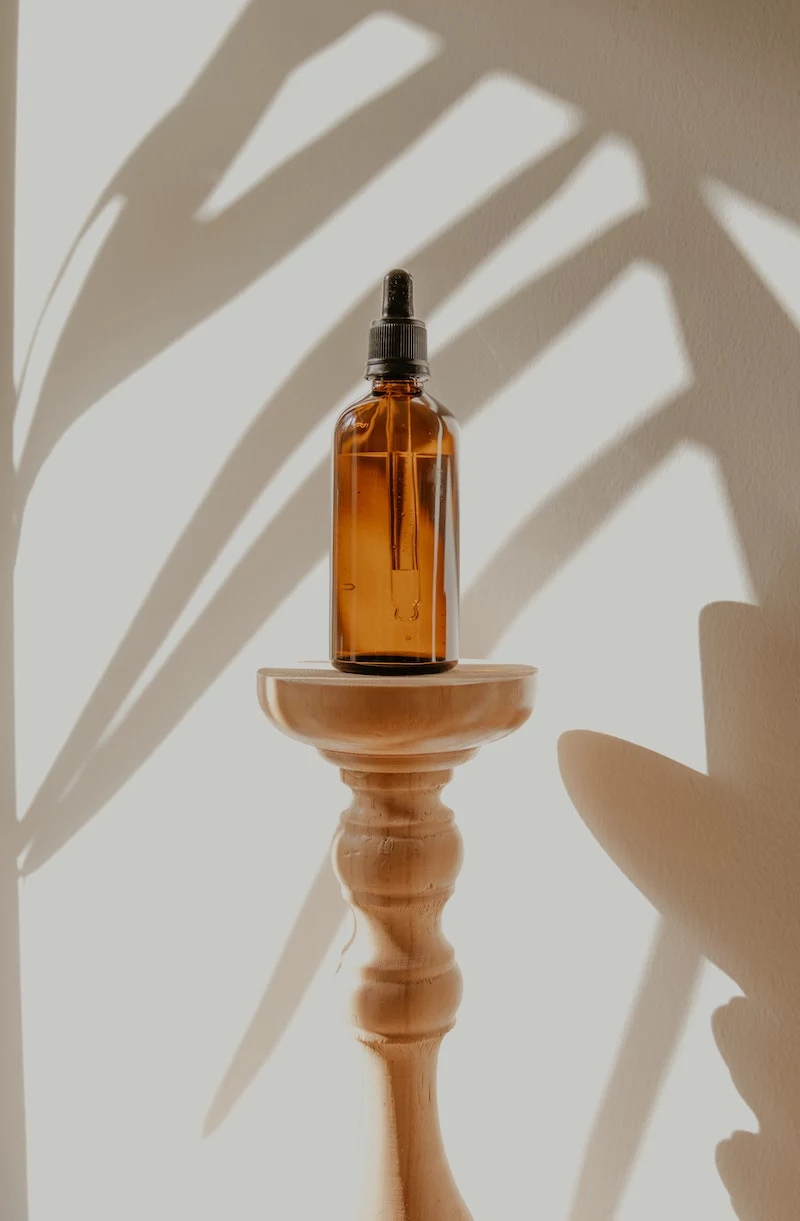
So, What Are These Oils Actually Doing?
To really get why oils work, it helps to know what’s happening on a microscopic level. Your scalp is skin, and when that skin is happy, your hair follicles can do their job properly. Oils help in a few key ways.
1. They Feed and Moisturize the Scalp
A dry, tight, or flaky scalp is a stressed-out scalp. It’s a poor factory for producing strong hair. Carrier oils are full of fatty acids that are fundamental to a healthy skin barrier. They help lock in moisture, keep the skin supple, and reduce that annoying itchiness. A nourished scalp is a happy scalp.
2. They Boost Blood Flow
Your hair follicles get all their food and oxygen from tiny blood vessels. Better blood flow equals better nutrient delivery. The simple act of massaging oils into your scalp is a fantastic way to get the circulation going. By the way, some essential oils like peppermint and rosemary give this a nice little boost, too!
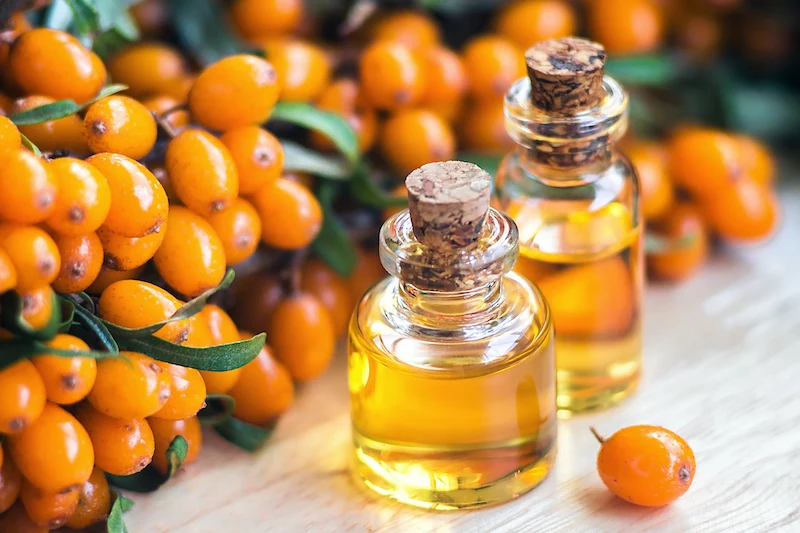
3. They Calm Things Down
Low-level inflammation is a sneaky enemy of hair growth. It can quietly damage follicles over time. Many oils have natural anti-inflammatory properties that help soothe this irritation. For example, the unique compounds in castor oil can really help calm an angry scalp. Plus, some essential oils like tea tree have antimicrobial properties that can help keep dandruff-causing microbes in check.
4. They Protect Your Hair Strands
The hair you can see is basically dead tissue, which means it can’t repair itself. So, protecting it is everything. When you wash your hair, the strands swell with water and then shrink as they dry. This cycle, sometimes called hygral fatigue, weakens hair over time, leading to breakage. A pre-wash oil treatment (or “pre-poo”) coats the hair, limiting how much water it soaks up. The result? Less damage and fewer split ends.
Choosing Your Carrier Oil: The Foundation of Your Blend
These are the oils that will do the heavy lifting. Each one has its own personality. Picking the right one for your hair type is probably the most important decision you’ll make.
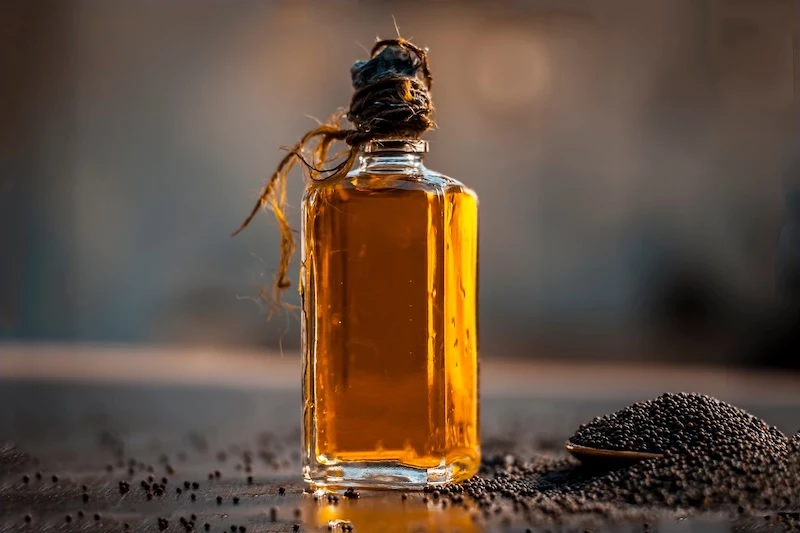
Quick Guide: Which Carrier Oil Is Right for You?
Feeling a little lost? No problem. It’s way simpler than it seems. Here’s a quick cheat sheet based on your hair type.
- If your hair is fine, thin, or gets greasy easily… you’ll want something light that won’t weigh you down. Your best bets are Jojoba Oil (which is technically a wax ester and mimics your scalp’s natural sebum), Grapeseed Oil, or Sweet Almond Oil.
- If your hair is thick, dry, coarse, or coily… your hair can handle and will love a richer, heavier oil. Try Coconut Oil (great for penetrating the hair shaft), Avocado Oil, or even a Castor Oil blend.
- If your scalp is the main problem (itchy, flaky, irritated)… you want a soothing, anti-inflammatory hero. Burdock Root Oil is a classic choice for this, as are blends containing Neem Oil or Castor Oil.
Castor Oil: The Thick, Powerful Healer
I have a real love-hate relationship with this one. It’s incredibly effective but, man, it can be a beast to work with. It’s thick, sticky, and a nightmare to wash out if you use too much. A client once told me it took four shampoos to get it out of her fine hair—lesson learned!
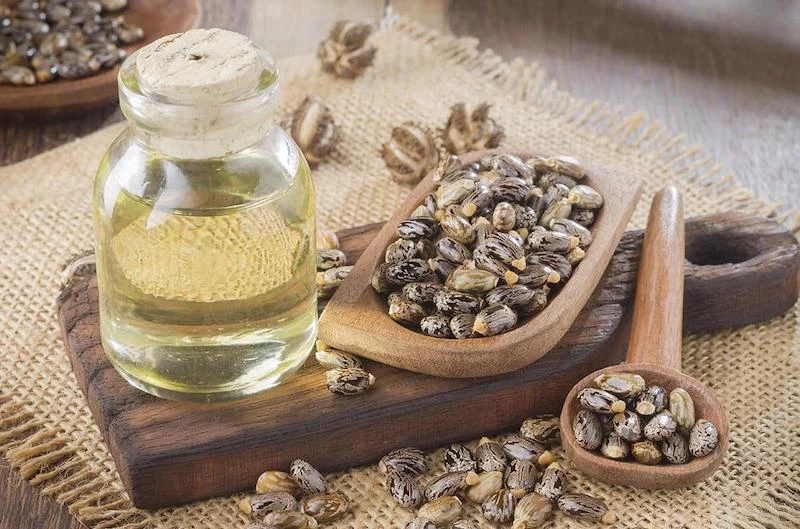
The Good Stuff: Its power comes from something called ricinoleic acid, which makes up about 90% of its composition. This stuff is a potent anti-inflammatory and is fantastic for scalp health. A good bottle of cold-pressed castor oil is usually a steal, around $8-$15 for a bottle that will last ages.
How to Use It: For most people, I strongly recommend blending it. A great starting ratio is 1 part castor oil to 3 parts a lighter oil, like jojoba. This gives you all the benefits without the sticky mess. You’ll also see Jamaican Black Castor Oil (JBCO), which is darker because the beans are roasted. The ash content is said to be extra clarifying. Many people with coily, high-porosity hair swear by it. Oh yeah, “porosity”? Think of low-porosity hair like a sealed raincoat—it’s tough for moisture to get in. High-porosity is more like a sponge. Lighter oils work better on the “raincoat” type hair!
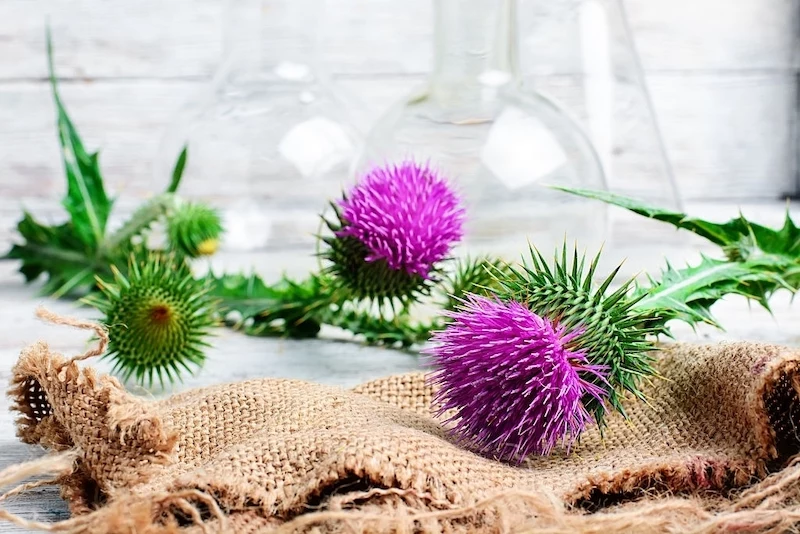
Pro Tip for Washing It Out: Apply your shampoo directly to your dry, oiled hair before you add water. Massage the shampoo in to break up the oil first, then add a little water to lather up and rinse. It works like a charm.
Burdock Root Oil: The Traditional Scalp Soother
This one causes a lot of confusion, so let’s clear it up. There’s no such thing as pure burdock oil. It’s actually an infused oil. This just means that pieces of burdock root were steeped in a carrier oil (usually olive or sunflower) to pull out all its beneficial compounds. So when you buy it, always check the label to see what the base oil is!
The Good Stuff: It has been a go-to in traditional European medicine for soothing scalp conditions like dandruff and itchiness. It’s a gentle giant for calming irritation.
How to Use It: You can buy it pre-made or even make your own. Just gently heat some dried burdock root in a carrier oil of your choice in a double boiler for a few hours (don’t fry it!). Let it cool, strain it through some cheesecloth, and store it in a dark glass bottle. It’s a fantastic, gentle scalp massage oil.

Mustard Oil: The Pungent Stimulator (Use With CAUTION!)
Okay, a serious heads-up on this one. This oil is potent. The first time I used it, I was shocked by the intense warming sensation. For some, it feels amazing and invigorating. For others, it’s just plain irritating.
The Good Stuff: That warming effect comes from a compound that dramatically increases blood flow to the scalp—a major plus for waking up sleepy follicles. It’s a staple in many South Asian cultures for head massage for this very reason.
How to Use It Safely: A patch test is NOT optional here; it’s mandatory. Here’s how: mix a single drop of mustard oil with a teaspoon of a neutral oil like coconut. Dab a small amount on your inner elbow and leave it for 24 hours. If you see any redness, or feel itching or burning, this oil is not for you. If you pass the test, use it only as a pre-shampoo treatment for 30-60 minutes max. And never use it neat—always dilute it.
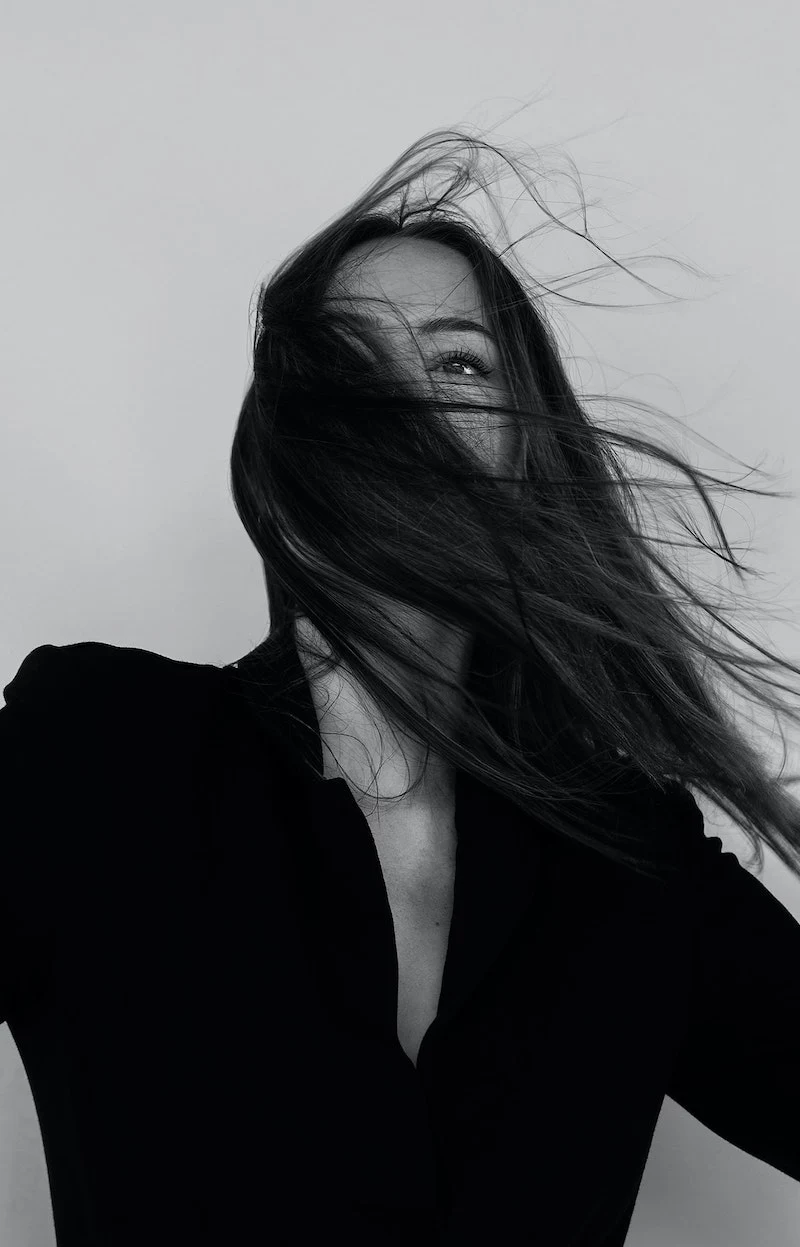
The Boosters: Adding Potent Essential Oils
Now for the fun part—the potent “shots” you add to your carrier oil base. Remember, these are concentrated, so a little goes a very long way. My golden rule is a safe dilution of 1-2%. That’s just 6-12 drops of essential oil per 1 ounce (about 30ml) of carrier oil.
- Rosemary Oil: The one everyone’s talking about, and for good reason. Some studies have shown it to be as effective as 2% minoxidil for pattern hair loss, but with less scalp itching. It’s a circulation-boosting superstar.
- Peppermint Oil: This gives you that cool, tingly feeling. That’s the menthol increasing blood flow right to the follicle. It’s very strong, so start with just 2-3 drops per ounce of carrier oil and keep it far away from your eyes!
- Cedarwood Oil: I love this for clients with either super oily or super dry, flaky scalps. It’s thought to help balance your scalp’s oil production and has a calming, woody scent.
- Lavender Oil: The gentle all-rounder. It’s known for its calming properties, both for skin and for your mind. It’s a great choice for an overnight treatment to help you relax.
Your First Hair Oiling Shopping List
Feeling ready to start? Don’t get overwhelmed. Here’s a simple list to get you going. A starter kit with these items will probably run you about $25-$40, but it’ll last for months.
- One Carrier Oil: Jojoba oil is a fantastic, all-purpose choice to start with. ($10-$15)
- One Essential Oil: Rosemary is a great first pick for its all-around benefits. ($8-$12)
- A Dropper Bottle: An amber glass bottle with a dropper top makes application so much cleaner and easier. You can find them online for a few bucks. ($2-$5)
- An Old T-shirt and a Shower Cap: To protect your clothes and pillowcase!
Putting It All to Work: Two Simple Methods
How you apply the oil is just as important as the oil itself. Here are the two main techniques I teach.
1. The Weekly Scalp Treatment
This is your cornerstone ritual for scalp health. Consistency is key.
- Mix your blend. In your dropper bottle, combine 1 ounce (about 2 tablespoons) of your carrier oil with 6-12 drops of your chosen essential oil(s).
- Section your dry hair. Use clips to create a few sections. This ensures the oil gets right on your scalp where it needs to be.
- Apply the oil. Use the dropper to apply the oil along the part lines. A little goes a long way.
- Massage. This is the most important part! Using the pads of your fingers (never your nails!), massage your entire scalp with firm, circular motions for 5-10 minutes. Enjoy it!
- Wait. Let the oil sit for at least 30 minutes, or even overnight. Pop on a shower cap to keep things tidy.
- Wash thoroughly. Remember the trick: apply shampoo to dry, oiled hair first, then lather and rinse. You might need to shampoo twice.
2. The Protective Pre-Poo
This is all about protecting your hair strands from washing damage. It’s a game-changer for dry, colored, or damaged hair.
- Choose a simple carrier oil. Coconut or olive oil from your kitchen work great.
- Apply to dry hair. Work the oil through the mid-lengths and ends of your hair—the parts that are older and more fragile.
- Wait. Let it soak in for at least 20-30 minutes before you hop in the shower.
- Wash and condition as usual. You’ll notice your hair feels softer and is way less tangled.
A Quick Reality Check
I have to be super clear about this. Oiling your hair is a supportive, deeply nourishing practice. It is not a cure for medical hair loss. You are treating the scalp to influence the new hair that has yet to grow. Since hair only grows about half an inch a month, you’ll need to be consistent for at least 3-6 months to really notice a difference in new growth. This is a marathon, not a sprint.
And please, see a board-certified dermatologist or a trichologist if you’re experiencing sudden, rapid shedding, bald patches, or hair loss that comes with pain or significant scaling. These can be signs of underlying health issues that oils alone can’t fix. Seeking professional advice is a sign of strength, not failure.
Ultimately, working with oils is a beautiful way to reconnect with your body. It’s a ritual of care. Pay attention, be patient, and give your hair the healthy foundation it needs to truly thrive.
Inspirational Gallery
Jojoba Oil: Its molecular structure is incredibly similar to our skin’s natural sebum. This makes it a perfect choice for balancing the scalp—it can moisturize a dry scalp or help regulate an oily one. It’s lightweight and won’t weigh down fine hair.
Castor Oil: This thick, viscous oil is rich in ricinoleic acid and acts as a powerful humectant, drawing moisture into the hair shaft. It’s too heavy for a full scalp treatment for many, but a small amount applied to the ends can help protect against breakage.
For a balanced scalp, Jojoba is a star. For strengthening brittle ends, Castor is your hero.
The scalp ages six times faster than facial skin and has a higher number of sebaceous glands, sweat glands, and follicles, making it a uniquely demanding ecosystem.
Transform your oil application from a chore into a true self-care ritual. Dim the lights, put on some calming music, and take a moment to truly warm the oil between your hands. As you massage it into your scalp, focus on the sensation—the gentle pressure of your fingertips, the soothing warmth, and the grounding aroma of oils like cedarwood or frankincense. It’s not just hair care; it’s a few minutes of dedicated mindfulness that can help melt away the day’s tension and reconnect you with yourself.
How long should I actually leave a scalp oil treatment in?
There’s a sweet spot. For a deep scalp treatment using a carrier oil, aim for at least 30-60 minutes before washing. This gives the oils enough time to soften debris and penetrate the upper layers of the skin. While overnight oiling is a tradition for many, if you have an oily or acne-prone scalp, this can sometimes lead to clogged follicles. Start with a shorter duration and see how your scalp feels and responds.
Ready to try a simple, effective blend? Here’s a recipe for a stimulating pre-shampoo treatment:
- 30ml (2 tablespoons) of a lightweight carrier oil like sweet almond or grapeseed oil.
- 3 drops of rosemary essential oil (to boost circulation).
- 2 drops of peppermint essential oil (for a refreshing, tingling sensation).
- 2 drops of lavender essential oil (for its calming properties).
Mix in a small dropper bottle, shake well, and massage into the scalp 30 minutes before you wash your hair.
- Reduces friction between hair strands
- Seals in moisture after washing
- Adds a reflective, healthy-looking shine
The secret? Using a tiny amount of a ‘finishing’ oil. After your hair is styled and dry, rub just 1-2 drops of a fine oil like Kérastase’s Elixir Ultime or a pure Argan oil between your palms and lightly smooth it over the mid-lengths and ends. It acts like a protective, gloss-giving topcoat for your hair.
A 2015 clinical trial published in SKINmed Journal found that rosemary oil was just as effective as minoxidil 2% (the active ingredient in Rogaine) for treating androgenetic alopecia after six months of consistent use.
This doesn’t make it a magic potion, but it scientifically validates rosemary’s traditional use. The study suggests the oil works by improving circulation to the follicles and providing antioxidant protection. This is a powerful testament to why a consistent oiling routine with the right ingredients can create a healthier environment for hair growth.
The one mistake everyone makes: Applying oil to a dirty scalp. Piling a beautiful treatment oil on top of days of product buildup, dry shampoo, sweat, and environmental grime can trap dirt against the follicles. This can lead to irritation and inflammation—the exact opposite of what you want to achieve. For best results, apply your oil treatment to a relatively clean scalp, perhaps the day before or the morning of your planned hair wash day.
The practice of hair oiling is deeply rooted in ancient traditions, particularly the Indian practice of Ayurveda. More than just a beauty step, ‘Shiro Abhyanga’ (head massage with oil) is a therapeutic ritual designed to balance energy, calm the nervous system, and promote strong, lustrous hair. Brands like Fable & Mane have built their entire philosophy on these time-tested rituals, using traditional ingredients like Ashwagandha in their pre-wash hair oils.










